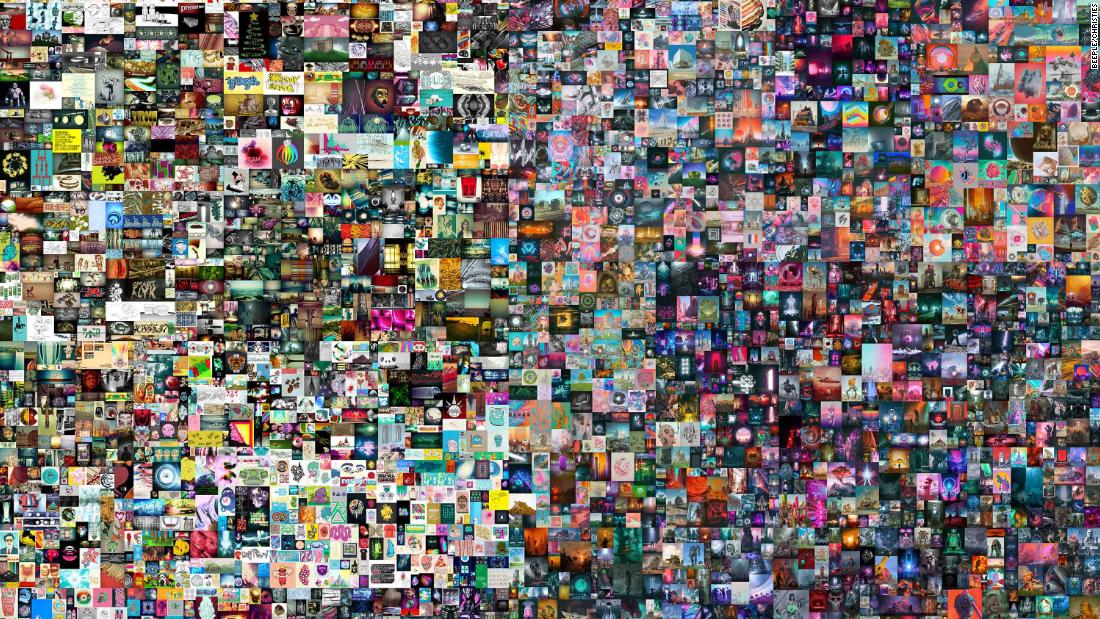Understanding Digital Ownership
Published May 3, 2021
What is going on? An Introduction
First the “Nyan Cat” meme was sold at auction for $587K.

Nyan Cat Gif - $587,241
Then Beeple sold a large jpeg file containing the 5000 images in his “Everyday” series. At auction this sold for $69,000,000. One of the highest $$$ art sales ever.

Beeple - Everyday - $69M
Then Jack Dorsey sold his first tweet for $2.9M.

Jack's first Tweet - adorable - $2.9M
And I grew more and more mystified.
All of these sales, and others, involved a cryptocurency invention called the Non-Fungible-Token (NFT). Who is buying these? And more curiously, how on earth do you buy a digital image since by their nature they are trivial to copy.
WTF?
What I think is going on: Analysis
First, who is buying? I’m presuming it’s “kids” who are holding a bunch of cryptocurrency and don’t know what to do with it.
If you were early to the bitcoin party you might have mined large amounts when it was cheap to mine and then have nothing to do with the resulting assets. Bitcoin is hard to cash out into USD in large quantities. And unless you want to buy guns, drugs, or people there isn’t a lot to do with your millions in BTC.
So frivilous art purchases makes sense. It certainly happens in the real world.
But what about owning easily copyable digital images???
This mystified me for a while.
What finally helped was to ponder the nature of ownership.
Do you own a house or car? Who says?
In older times ownership was defended through threats of violence. That castle was yours because you had armed staff to keep it yours.
At some point we evolved governments with systems of civic justice to manage this for us.
That ownership of your house or car? There is a trusted central authority who records that ownership. You may even have a piece of paper issued by that authority that you can use as a token of your ownership.
In almost all cases, though, the authoratative recognition of ownership is held by that central governmental authority.
If there is an ownership dispute, you prove your identity, the governmental authority then verifies ownership. In the worst case, a court gets involved and a judge makes a ruling.
That’s ownership.
A similar system could be set up for digital images. But there isn’t such a system.
And it turns out the crypto currency Etherium was set up to solve just this problem.
Bitcoin, the first cryptocurrency, is just a currency. It can record who owns which ammounts of the currency called Bitcoin. If you buy some Bitcoin (BTC), you create an account that records how much of it you own. If you buy something, you transfer some of that BTC to someone elses account.
Bitcoin is both the currency and the means of recording those transactions.
Back to home ownership, everyone agrees to trust the government that holds the title records.
Bitcoin, however, is completely decentralized. There is no single trusted central authority.
Instead, the records of BTC ownership is spread out across a enormous number of separate and independent computer systems each with a copy of the BTC “ledger”. This ledger is impossible to forge (for reasons beyond the scope of this article. trust me on this point. it is key to everything).
Since the record of BTC transactions can’t be forged and it is spread out across different servers world wide, it’s availability and immutability becomes a form of trust.
Bitcoin only records coin transfers.
Etherium is another cryptocurrency which was built to not only record coin transactions but other information.
For example, an Etherium transfer could indicate that a particular account owns a particular thing. Like a digital image. The description of the image is included in a way that uniquely identifies the image.
So you can buy the image.
What if someone copies it?
That isn’t a problem solved by this. If you bought Beeple’s image, all you get is proof in the Etherium ledger that you own the image. If you want to try to enforce copyright, take it to a court just like in the real world.
Etherium’s ledger lets you absolutely prove that you bought Beeple’s image. What you do with that proof of ownership is up to you.
Thus we have digital ownership.
It suddenly makes sense and is intriguing to me in a way that Bitcoin never has.
I’m not going to go out and start making dumb purchases of cats farting rainbows. But a decentralized way of recording “ownership” feels like it has merit.
Terminology Note
Above I used the term “ledger” for the place where transactions are recorded because that is a well understood term. The term used in everything about cryptocurrency is “blockchain”. That is a technical term that describes the nature of the “ledger” used in cryptocurrencies.
Every time you read the word “blockchain” when you read about cryptocurrencies, just think “ledger”. “Ledger” a thing that records transactions.